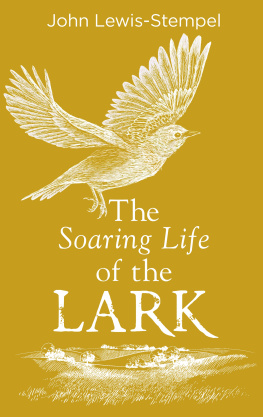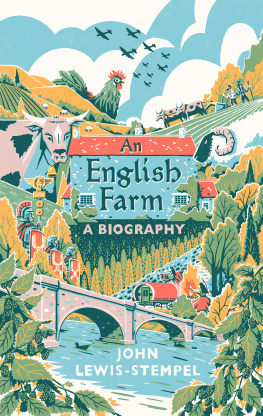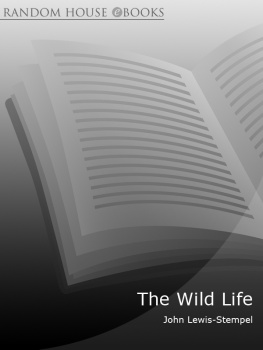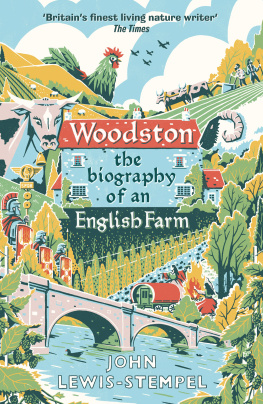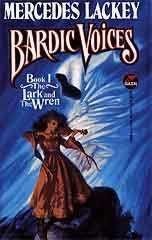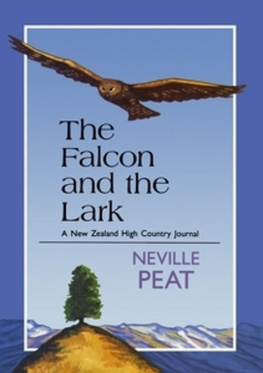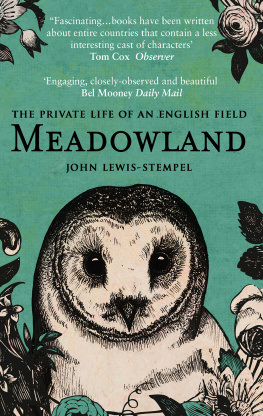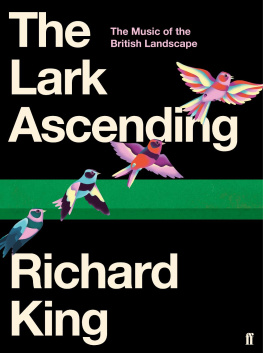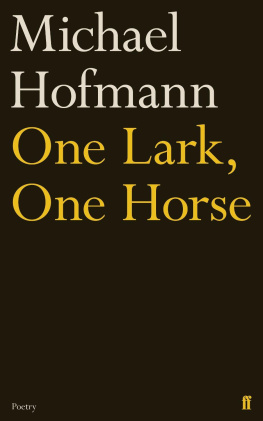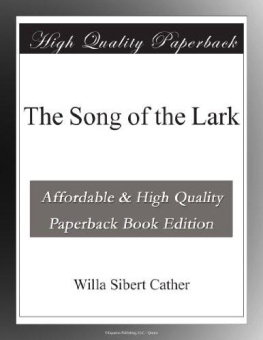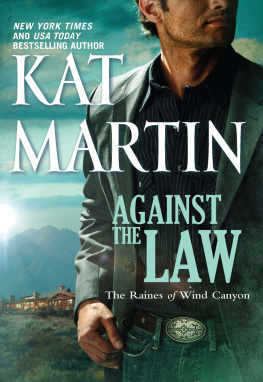About the Author
John Lewis-Stempel is a writer and farmer. His books include the Sunday Times bestsellers Woodston, The Running Hare and The Wood. He is the only person to have won the Wainwright Prize for Nature Writing twice, with Meadowland and Where Poppies Blow. In 2016 he was Magazine Columnist of the Year for his column in Country Life. He farms cattle, sheep, pigs and poultry. Traditionally.
John Lewis-Stempel
THE SOARING LIFE OF THE LARK

TRANSWORLD
UK | USA | Canada | Ireland | Australia
New Zealand | India | South Africa
Transworld is part of the Penguin Random House group of companies whose addresses can be found at global.penguinrandomhouse.com.

First published by Doubleday in 2021
Copyright John Lewis-Stempel 2021
Every effort has been made to obtain the necessary permissions with reference to copyright material, both illustrative and quoted. We apologize for any omissions in this respect and will be pleased to make the appropriate acknowledgements in any future edition.
The moral right of the author has been asserted
Cover design and illustrations by Beci Kelly/TW
Cover: Field illustration Shutterstock
ISBN: 978-1-473-55861-8
This ebook is copyright material and must not be copied, reproduced, transferred, distributed, leased, licensed or publicly performed or used in any way except as specifically permitted in writing by the publishers, as allowed under the terms and conditions under which it was purchased or as strictly permitted by applicable copyright law. Any unauthorized distribution or use of this text may be a direct infringement of the authors and publishers rights and those responsible may be liable in law accordingly.
Also by John Lewis-Stempel from Doubleday
The Wild Life: A Year of Living on Wild Food
Meadowland: The Private Life of an English Field
The Running Hare: The Secret Life of Farmland
The Secret Life of the Owl
The Wood: The Life and Times of Cockshutt Wood
The Glorious Life of the Oak
Still Water
The Private Life of the Hare
The Wild Life of the Fox
Woodston: The Biography of an English Farm
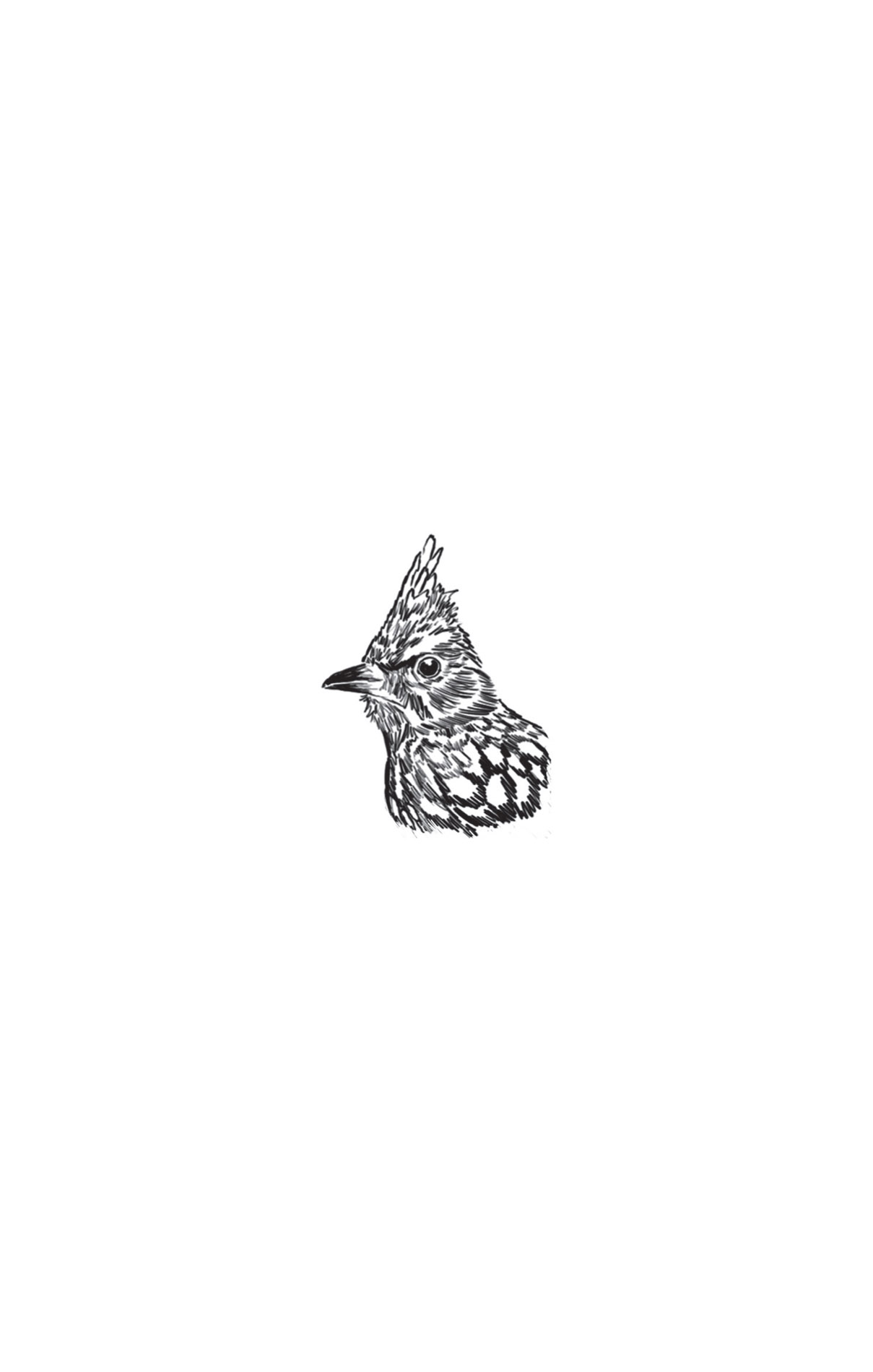
Prologue
L ONG AGO, THE Venerable Bede calculated that the first day of Creation was the eighteenth of March.
Remembrance of this schoolboy fact comes to me as I stand in Bank Field, the dew on the grass as shiny as birth fluid, every hedge exhilarated by thorns white blossom, the sky so clear I can see into Heaven. The astronomical arithmetic that led to the Anglo-Saxon monks discovery was explained to me at my Form Three desk, agilely so. I thought the more plausible explanation was that Bede merely stood in an English field in March at dawn.
The world feels brand new on a spring morning such as this.
Certainly, the skylarks have found something to sing about. Two are fluttering above the hayfield, up into the dome of the blue world.
I was not up with the lark; the dawn-time. This is twenty minutes past dawn, although black night is still trapped down in the folds of the mountains of Wales to the west.
In their joy for life, skylarks will sometimes climb the sky and sing before first light. Once, when I was a child, I walked through our village with my parents at 3 a.m., after a wedding party. We took the footpath through the meadows, and every dark one of them fizzed with skylarks rising. But that was in the birdy 1970s.
How to describe the ecstatic song of larks? How the writers and poets have tried. The Victorian naturalist Richard Jefferies settled for a waterfall in the sky as he remembered sitting on the South Downs in his autobiographical The Story of My Heart; and for sunshine in song in Out of Doors in February. Percy Bysshe Shelley famously plumped, in To a Skylark, the most celebrated of skylark poems, for flood of rapture to describe the melodious chattering of the blithe spirit. Better to my ear this morning is the stanza of Scotsman William Dunbar, nearly as ancient as Bede:
Through beamis red, gleming, as ruby sparks,
The skyes rang for the shouting of larks.
But best is George Meredith in his The Lark Ascending, whose skylark:
rises and begins to round,
He drops the silver chain of sound
Of many links without a break,
In chirrup, whistle, slur and shake,
All intervolvd and spreading wide,
Like water-dimples down a tide
Where ripple ripple overcurls
And eddy into eddy whirls;
A press of hurried notes that run
So fleet they scarce are more than one
Merediths poem, of course, inspired Ralph Vaughan Williams to write his musical work of the same name, with quivering violin imitating the ascension singing of Alauda arvensis. I first heard Vaughan Williamss The Lark Ascending on a cassette tape borrowed from Hereford City Library when I was eleven; I returned the tape, but the music plays still in my mind.
Written as Vaughan Williams walked Margates cliff top in the first week of the Great War, it was an attempt to capture the spirit of English pastoralism. He succeeded.
We poeticize and musicalize the bird; the French, as the deceptively jaunty song Alouette confirms, roast it. (Little skylark, Ill pluck your feathers off runs the refrain, translated.) Yet we also do harm to the skylark; the numbers of the bird in England plummeted by 24 per cent between 1995 and 2013 due to changes in farming practice, principally the multiple cutting of grass for silage pickled winter fodder for livestock. Skylarks are doughty little birds but they cannot, sitting in their nest on the ground, survive the swirling steel blades of a Claas Disco mower three, four times a year. The big switch from autumn to spring sowing of cereal crops has done them no good either, because the crop lacks the right cover at the right time. I suppose, in retrospect, that the male skylarks of the 1970s needed to sing earlier in order to rise above the competition that came from numbers. Or maybe, in those days of less intensive agriculture, they just had more to sing about. Too many fields today, where skylarks once sang, are silent.
I wrote a book called The Running Hare, about the resistible decline of wildlife on farmland. I could just as easily have called the book The Descending Skylark. The hare and the skylark: they are both iconic animals, and indicators of all that is well or unwell in the countryside.
I watch the skylarks over the hayfield become trembling specks, then dissolve in the divine heights. A skylark can ascend 200 metres.
My love of songbirds is very British, very old. The Anglo-Saxons of the ninth century preferred to name members of the avian suborder Passeri which, strictly, biologically, is what a songbird is not by their appearance, the preference of modern science, but by their song. An Old English calendar for 1061 has 364 days devoted wholly to the doings of saints. The remaining day? The eleventh of February, for which the entry reads At this time, the birds begin to sing.
A spoilsport contemporary scientist will doubtless pipe that birds really only sing for a spouse and a tract of land. Maybe it is the fancy of frail humans to believe the birds sing for us. But listen to a skylarks song; surely it is Natures own music?

